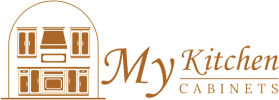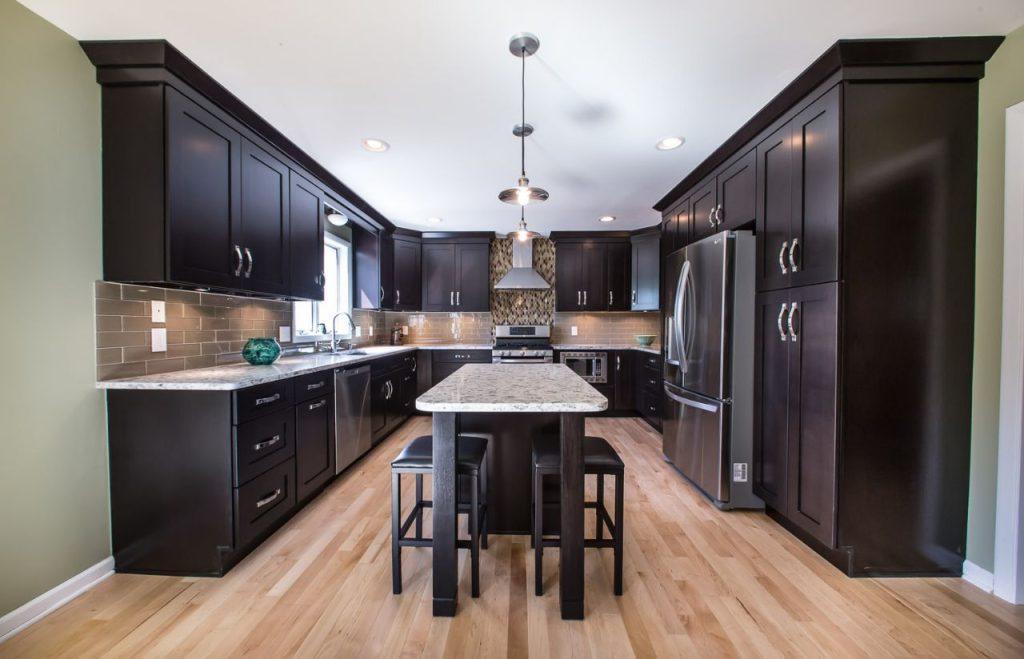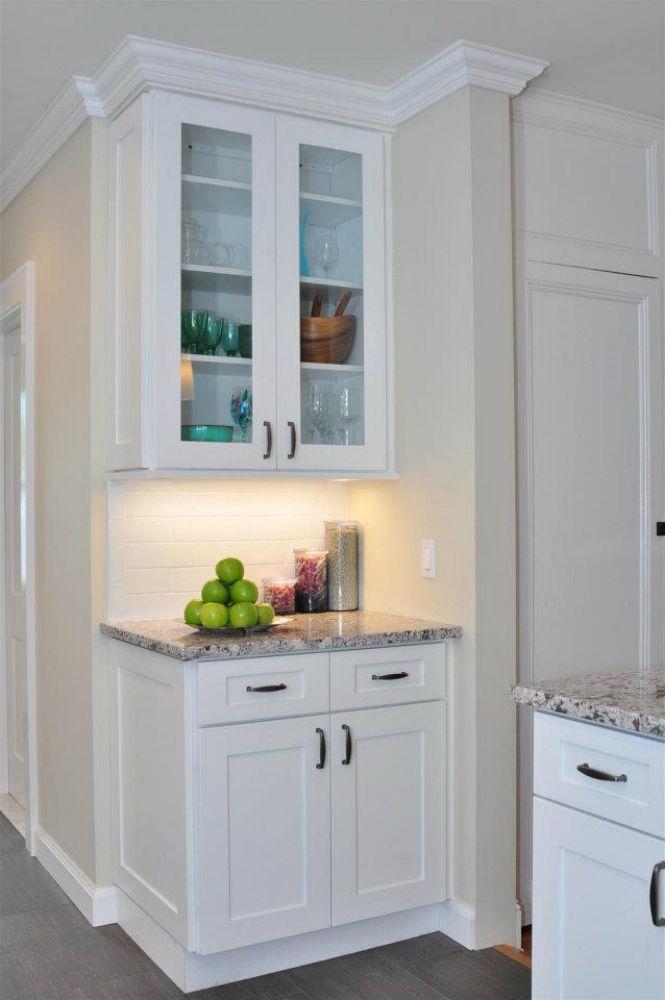Bathroom Vanities vs. Kitchen Cabinets: Which Is Right for You?
When it comes to home improvement, one common dilemma homeowners face is choosing between bathroom vanities and kitchen cabinets. These two pieces of furniture serve different purposes and are located in distinct parts of the house, but they share some similarities in terms of design, functionality, and material choices. In this comprehensive guide, we will address the ten most frequently asked questions about bathroom vanities and kitchen cabinets to help you make an informed decision for your home.
Question 1: What Are the Key Differences Between Bathroom Vanities and Kitchen Cabinets?
Introduction
Bathroom vanities and kitchen cabinets are both essential storage solutions, but they have distinct differences that cater to their respective purposes. Understanding these differences is crucial when deciding which is right for your home.
Materials
Bathroom Vanities: These are typically constructed from materials that can withstand moisture and humidity, such as moisture-resistant MDF, plywood, or solid wood with a waterproof finish.
Kitchen Cabinets: Kitchen cabinets can be made from a wider variety of materials, including hardwoods like oak, maple, and cherry, which are better suited for the kitchen’s demands.
Design
Bathroom Vanities: These are designed with aesthetics in mind, often featuring decorative elements like vessel sinks, unique hardware, and decorative mirrors.
Kitchen Cabinets: Functionality takes precedence in kitchen cabinet design, with a focus on maximizing storage space and accommodating appliances like stoves and refrigerators.
Size and Layout
Bathroom Vanities: Typically smaller and come in various sizes to fit different bathroom layouts.
Kitchen Cabinets: Larger and designed to create an efficient workspace in the kitchen.
Hardware and Accessories
Bathroom Vanities: Often come with decorative hardware and accessories like towel bars and built-in lighting.
Kitchen Cabinets: Hardware is chosen for durability and functionality, with options for pull-out shelves, lazy Susans, and more.
Conclusion
Understanding the key differences between bathroom vanities and kitchen cabinets is essential for making the right choice. Consider your specific needs, available space, and design preferences to determine which one suits your home best.
Question 2: Can Bathroom Vanities Be Used in the Kitchen?
Introduction
Repurposing furniture can be a creative way to enhance your home’s design and functionality. So, can bathroom vanities be used in the kitchen?
Considerations
- Size and Layout: Ensure the bathroom vanity’s size and layout can fit within your kitchen space without obstructing essential areas.
- Material: Check if the bathroom vanity’s construction and materials are suitable for kitchen use, considering factors like heat and moisture.
- Functionality: Assess whether the vanity’s design aligns with the kitchen’s storage and workspace needs.
Customization
If you decide to use a bathroom vanity in the kitchen, consider customizing it by:
- Changing the countertop to one more suited for kitchen tasks.
- Replacing decorative sinks with standard kitchen sinks.
- Adapting the vanity’s storage compartments to accommodate kitchen items.
Conclusion
While it is possible to use a bathroom vanity in the kitchen, it requires careful consideration and customization to ensure it meets the kitchen’s functional and aesthetic requirements.
Question 3: Can Kitchen Cabinets Be Used in the Bathroom?
Introduction
In some cases, using kitchen cabinets in the bathroom can be a practical solution, especially when you have limited space or want a cohesive design throughout your home.
Considerations
- Size and Space: Ensure that the kitchen cabinets’ dimensions are appropriate for the bathroom and won’t overcrowd the area.
- Materials: Choose cabinets that can withstand the bathroom’s moisture and humidity levels, such as marine-grade plywood or moisture-resistant materials.
- Design: Adapt the kitchen cabinets’ design by selecting finishes, hardware, and accessories that complement the bathroom’s style.
Customization
To make kitchen cabinets work in the bathroom, consider:
- Replacing kitchen hardware with bathroom-appropriate fixtures.
- Installing a bathroom countertop and sink.
- Incorporating storage solutions tailored to bathroom necessities.
Conclusion
While repurposing kitchen cabinets for the bathroom can be a cost-effective choice, it necessitates careful planning and customization to ensure functionality and aesthetics align with the bathroom’s needs.
Question 4: What Are the Cost Differences Between Bathroom Vanities and Kitchen Cabinets?
Introduction
Cost is a significant factor when deciding between bathroom vanities and kitchen cabinets. Let’s explore the cost differences between these two home fixtures.
Bathroom Vanities
- Basic: A simple bathroom vanity with a standard countertop and sink can cost anywhere from $200 to $1,000.
- Mid-Range: Vanities with more features, higher-quality materials, and additional storage may range from $1,000 to $3,000.
- Luxury: Custom or designer bathroom vanities with premium materials and unique designs can cost $3,000 or more.
Kitchen Cabinets
- Basic: Entry-level kitchen cabinets might start at $100 per linear foot.
- Mid-Range: For mid-range options, expect to pay $200 to $500 per linear foot, which includes better materials and design choices.
- Luxury: High-end or custom kitchen cabinets can cost $500 to $1,500 per linear foot or more, depending on materials and customization.
Factors Affecting Cost
Several factors can influence the cost of both bathroom vanities and kitchen cabinets, including:
- Material quality.
- Cabinet size and layout.
- Hardware and accessories.
- Customization options.
- Installation fees.
Conclusion
Understanding the cost differences between bathroom vanities and kitchen cabinets is essential for budgeting your home improvement project effectively.
Question 5: How Do I Choose the Right Material for Bathroom Vanities and Kitchen Cabinets?
Introduction
Selecting the right material for your bathroom vanities and kitchen cabinets is crucial for their longevity and performance. Let’s explore the material options for each and how to make the right choice.
Bathroom Vanities
- Moisture-Resistant MDF: A cost-effective choice that offers decent moisture resistance, but it’s not as durable as other options.
- Plywood: Known for its sturdiness and moisture resistance, making it suitable for bathroom environments.
- Solid Wood: Provides a classic and elegant look but requires proper sealing to resist moisture.
Kitchen Cabinets
- Hardwood: Oak, maple, cherry, and birch are popular hardwood choices due to their durability and aesthetic appeal.
- Laminate: Offers a budget-friendly option with a wide range of finishes but may not be as durable as hardwood.
- Thermofoil: A heat-sealed vinyl finish that is resistant to moisture and easy to clean.
- Particleboard: Economical but less resistant to moisture, making it suitable for dry areas of the kitchen.
Considerations
When choosing materials, consider factors like:
- The level of moisture exposure in the bathroom or kitchen.
- Your budget and desired aesthetic.
- Maintenance requirements for the selected material.
Conclusion
Selecting the right material for your bathroom vanities and kitchen cabinets depends on your specific needs, budget, and style preferences. Assess the environment and make an informed decision to ensure long-lasting and functional furniture.
Question 6: What Are the Latest Trends in Bathroom Vanities and Kitchen Cabinets?
Introduction
Staying up-to-date with the latest trends can help you make stylish choices when it comes to bathroom vanities and kitchen cabinets. Let’s explore some of the current trends in both areas.
Bathroom Vanities
- Floating Vanities: These appear to “float” above the floor, creating a sleek and modern look.
- Open Shelving: Opt for open shelving below the vanity for a trendy and accessible storage solution.
- Vessel Sinks: These above-counter sinks come in various shapes and materials, adding an artistic touch to your vanity.
Kitchen Cabinets
- Two-Tone Cabinets: Combining two contrasting cabinet colors or finishes for an eye-catching look.
- Handleless Cabinets: Achieve a minimalist and seamless appearance with cabinets that lack visible handles.
- Mixed Materials: Incorporating different materials like wood and metal for a unique design.
Personalization
Keep in mind that while trends can provide inspiration, it’s essential to choose designs and features that align with your personal style and preferences.
Conclusion
Staying informed about the latest trends in bathroom vanities and kitchen cabinets can help you create a stylish and functional space that reflects your taste and personality.
Question 7: What Factors Should I Consider When Installing Bathroom Vanities and Kitchen Cabinets?
Introduction
Proper installation is key to the functionality and longevity of your bathroom vanities and kitchen cabinets. Let’s explore the essential factors to consider during the installation process.
Professional Installation
- Hiring experienced professionals ensures that your vanities and cabinets are correctly installed.
- Professionals can address any plumbing or electrical work required during installation.
Space and Layout
- Ensure the vanities and cabinets are positioned to maximize space and accessibility.
- Account for clearance around doors, drawers, and appliances in the kitchen.
Leveling and Anchoring
- Properly level and anchor cabinets to prevent sagging or tilting.
- Ensure they are securely attached to wall studs or floor joists.
Plumbing and Electrical Considerations
- In bathrooms, ensure proper plumbing connections for sinks and faucets.
- In kitchens, coordinate electrical connections for appliances and lighting fixtures.
Finishing Touches
- Install appropriate hardware and accessories, such as handles, knobs, and hinges.
- Apply any finishing treatments or seals required for the chosen materials.
Conclusion
A well-executed installation is crucial for the functionality and aesthetic appeal of bathroom vanities and kitchen cabinets. Hiring professionals and paying attention to the details will ensure a successful outcome.
Question 8: How Can I Maximize Storage Space in Bathroom Vanities and Kitchen Cabinets?
Introduction
Efficient storage is a top priority when it comes to bathroom vanities and kitchen cabinets. Let’s explore strategies to maximize storage space in both areas.
Bathroom Vanities
- Drawer Dividers: Use dividers to organize toiletries and cosmetics in vanity drawers.
- Open Shelving: Incorporate open shelves for easy access to towels and everyday essentials.
- Medicine Cabinets: Install a mirrored medicine cabinet above or beside the vanity for concealed storage.
Kitchen Cabinets
- Pull-Out Shelves: Utilize pull-out shelves for easy access to pots, pans, and pantry items.
- Lazy Susans: Make corner cabinet space accessible with lazy Susans.
- Vertical Dividers: Use dividers for baking sheets, cutting boards, and trays.
- Under-Cabinet Lighting: Illuminate dark corners to improve visibility and accessibility.
Customization
Consider customizing your vanities and cabinets to fit your specific storage needs, such as adding spice racks, utensil dividers, or tray organizers.
Conclusion
Maximizing storage space in bathroom vanities and kitchen cabinets requires thoughtful planning and the use of clever organizational solutions. Tailor your storage options to suit your daily routines and needs.
Question 9: How Do I Maintain and Clean Bathroom Vanities and Kitchen Cabinets?
Introduction
Proper maintenance and cleaning are essential for preserving the appearance and functionality of your bathroom vanities and kitchen cabinets. Let’s explore maintenance tips for both.
Bathroom Vanities
- Regular Wipe Down: Clean surfaces with a damp cloth or mild soapy water to remove dust and grime.
- Avoid Harsh Cleaners: Use non-abrasive cleaners to prevent damage to finishes.
- Seal Wooden Vanities: If you have a wooden vanity, periodically reseal it to protect against moisture.
Kitchen Cabinets
- Wipe Spills Promptly: Clean up spills and splatters immediately to prevent staining and damage.
- Avoid Steam and Heat: Keep cabinets away from stovetops and ovens to prevent warping.
- Use Cabinet Liners: Place liners in drawers and shelves to protect surfaces from scratches and spills.
Hardware Care
Regularly inspect and tighten hardware, such as handles and knobs, to prevent them from coming loose.
Conclusion
Regular maintenance and proper cleaning techniques are essential to extend the lifespan and appearance of your bathroom vanities and kitchen cabinets. Follow manufacturer guidelines for specific care instructions.
Question 10: How Can I Upgrade the Look of Bathroom Vanities and Kitchen Cabinets?
Introduction
If you’re looking to refresh the appearance of your bathroom vanities and kitchen cabinets without a full replacement, there are several upgrade options to consider.
Bathroom Vanities
- Paint or Refinish: Give your vanity a new look by painting or refinishing it in a different color or finish.
- Change Hardware: Replacing knobs and handles with updated styles can make a significant difference.
- Upgrade Countertop: Install a new countertop for a fresh, modern look.
Kitchen Cabinets
- Refacing: Cabinet refacing involves replacing cabinet doors and drawer fronts while keeping the existing cabinet boxes.
- Paint or Stain: Change the color of your cabinets with paint or stain to match your desired style.
- Add Glass Inserts: Replace some cabinet doors with glass inserts for a decorative touch.
Lighting and Backsplash
Consider upgrading lighting fixtures and adding a stylish backsplash to enhance the overall appearance of both bathroom vanities and kitchen cabinets.
Conclusion
Upgrading the look of your bathroom vanities and kitchen cabinets can be a cost-effective way to breathe new life into your space. Choose upgrades that align with your design preferences and budget.
In conclusion, bathroom vanities and kitchen cabinets play vital roles in home design and functionality. Understanding their differences, material choices, installation considerations, and maintenance tips is essential for making informed decisions about these essential fixtures. Whether you’re renovating your kitchen, updating your bathroom, or exploring creative ways to repurpose furniture, this comprehensive guide provides valuable insights to help you make the right choices for your home.
Read: Knobless Kitchen Cabinets: How to Achieve This Elegant Look


